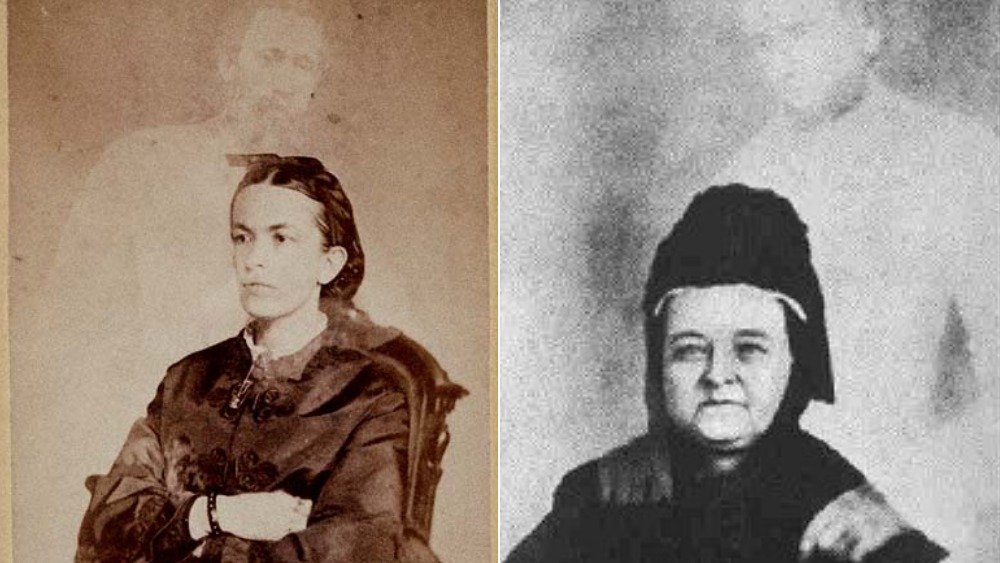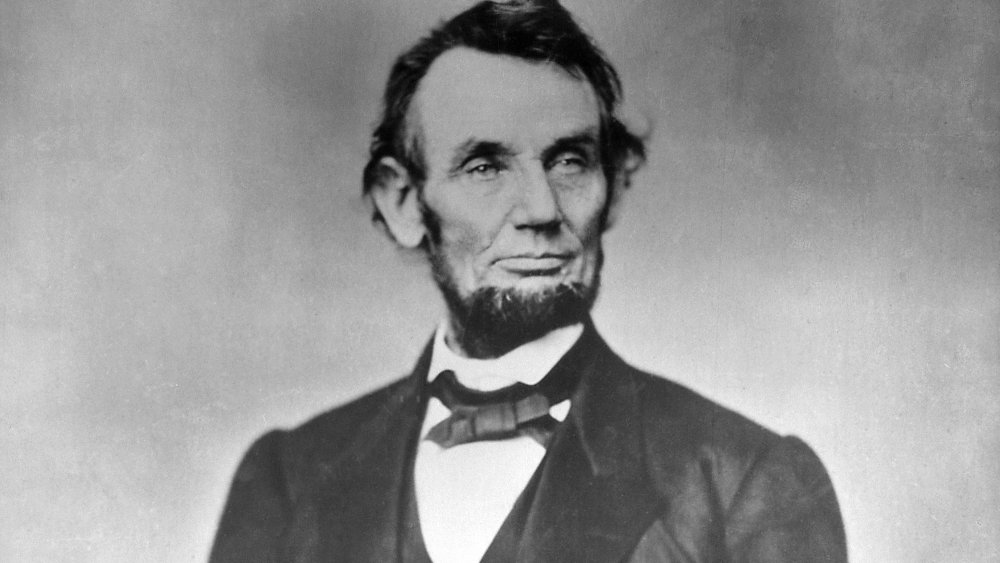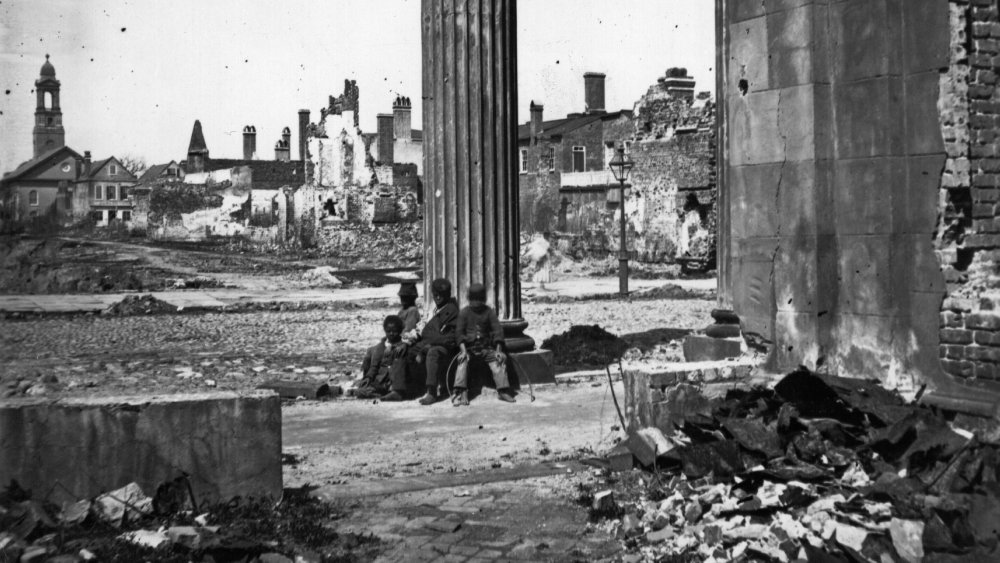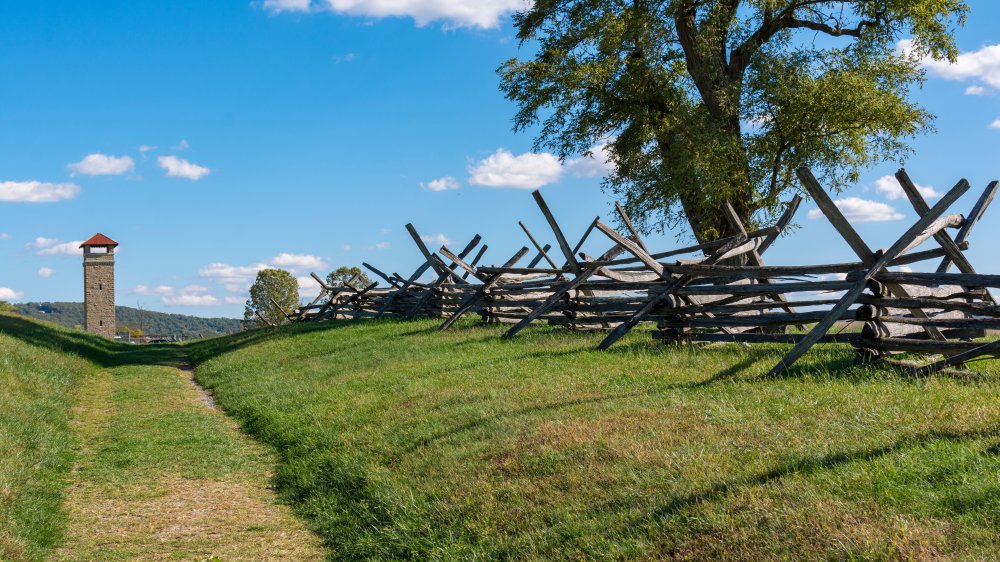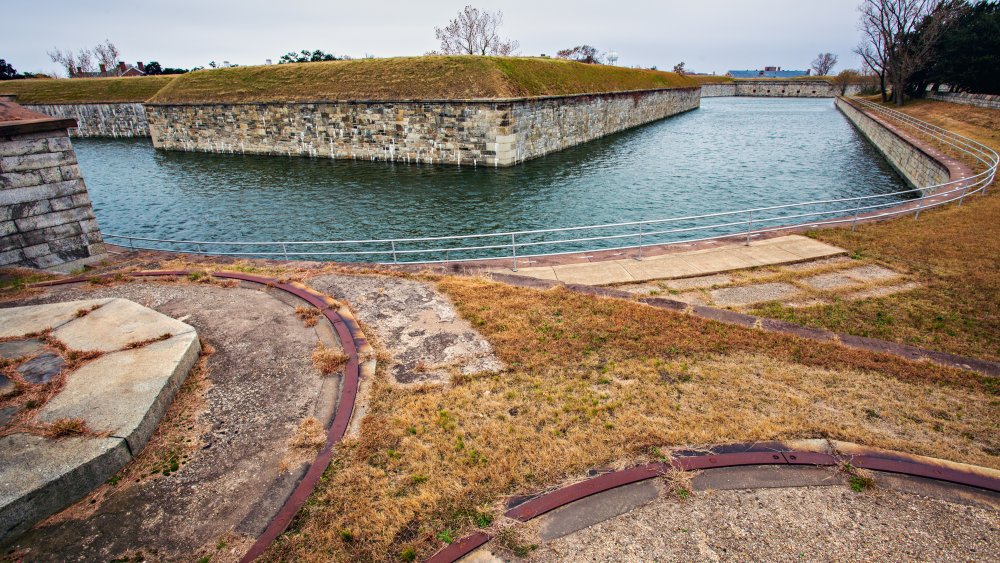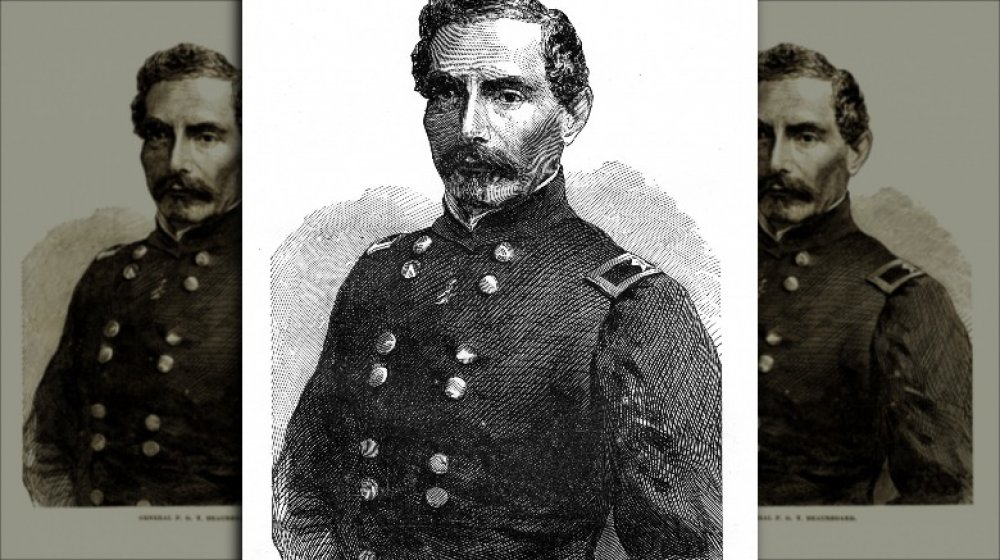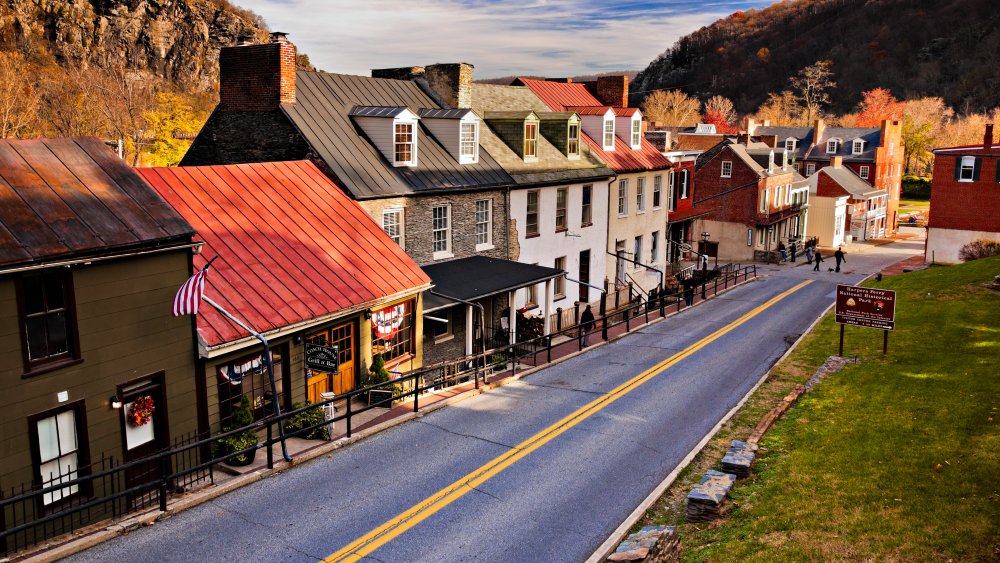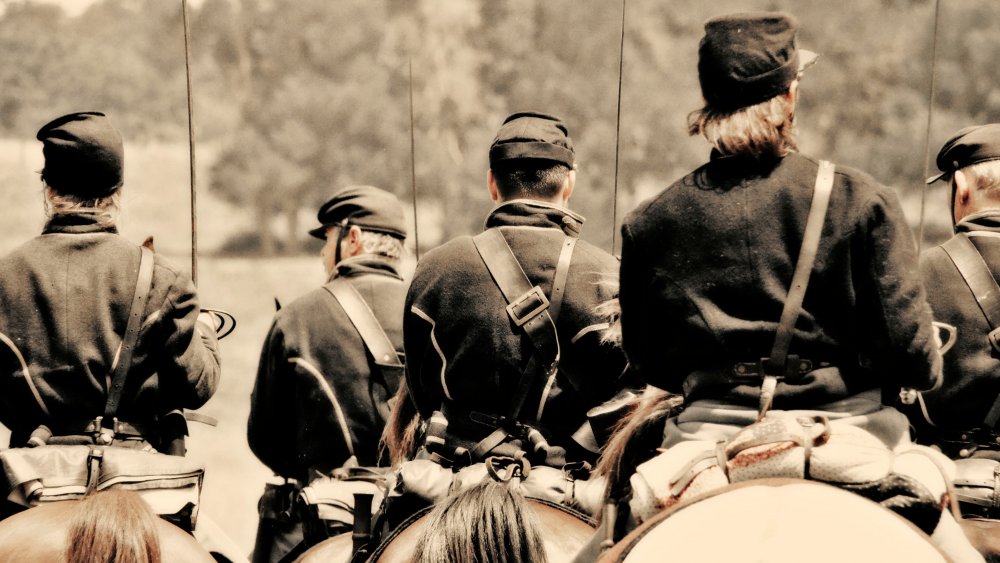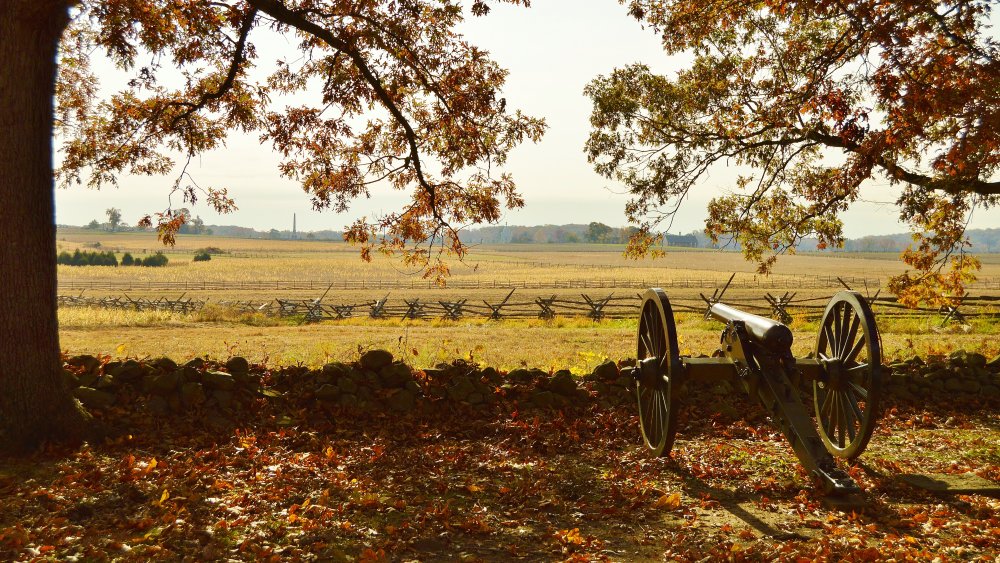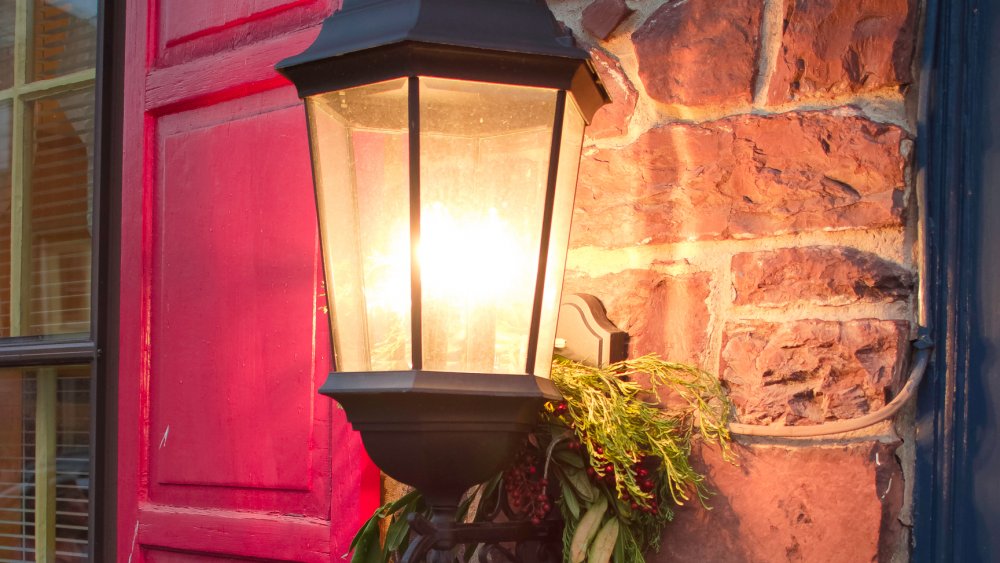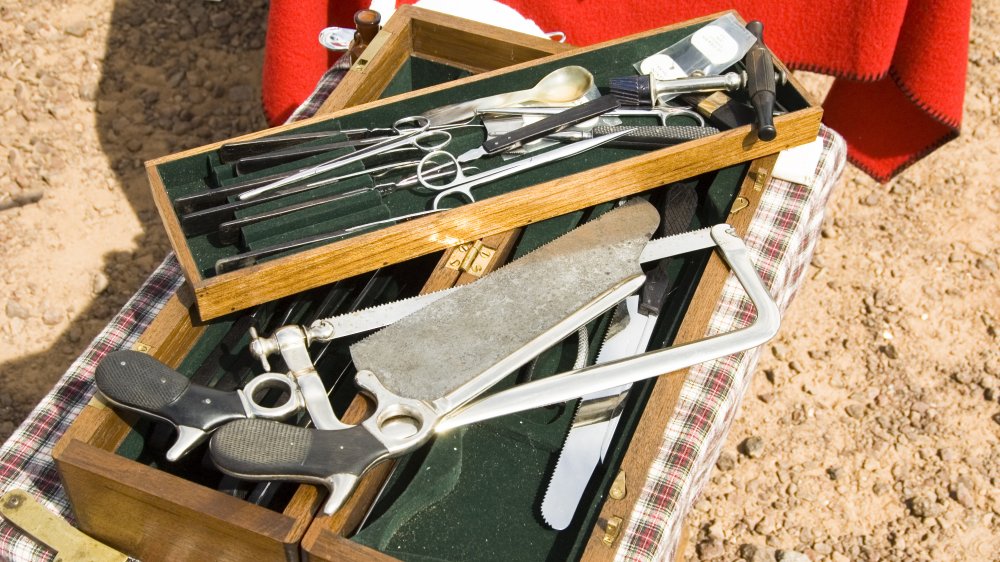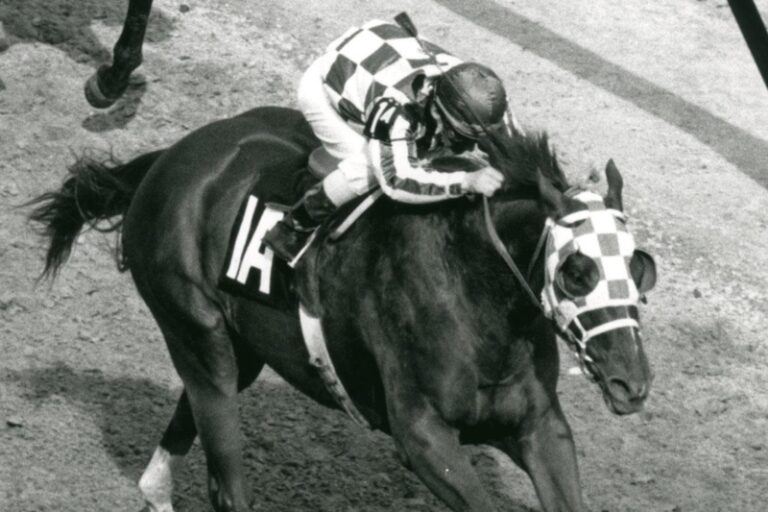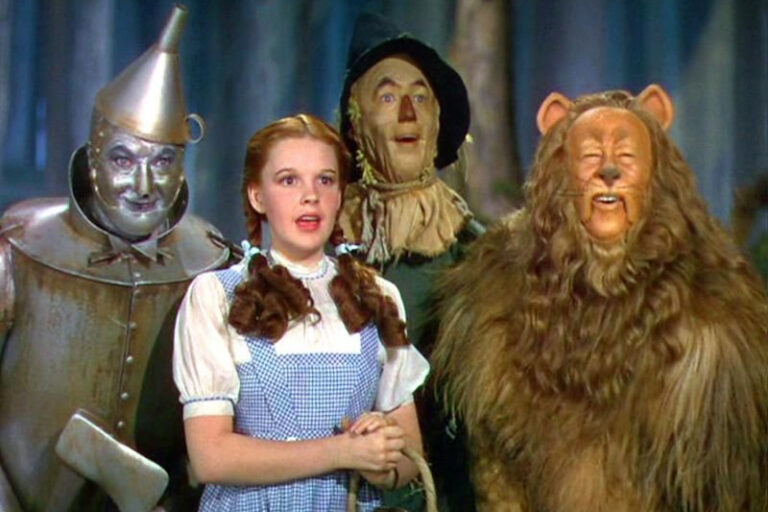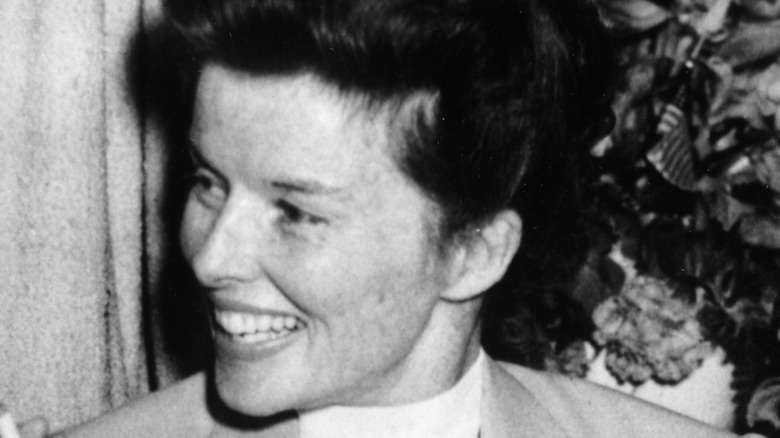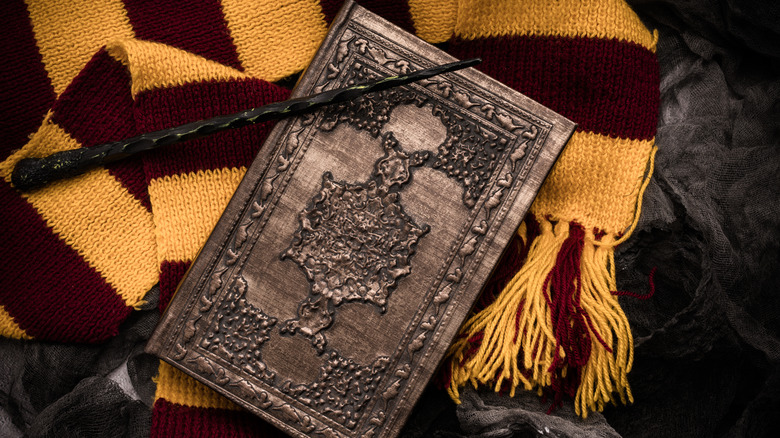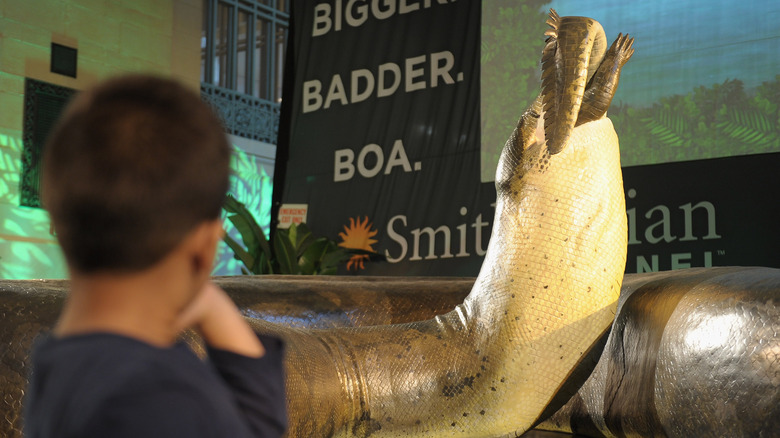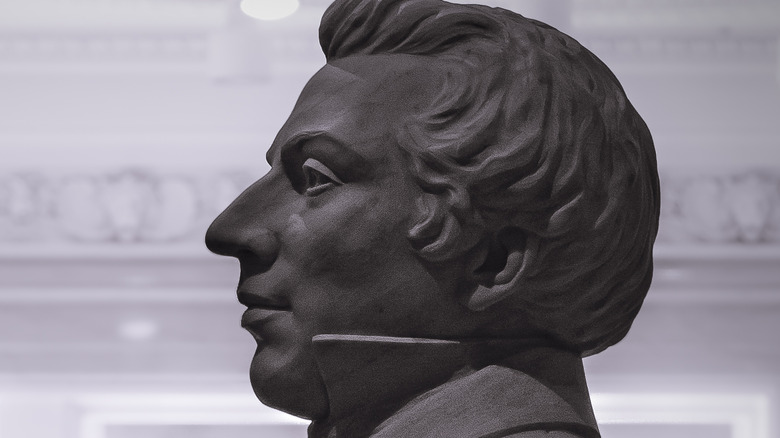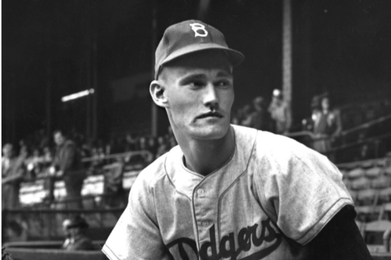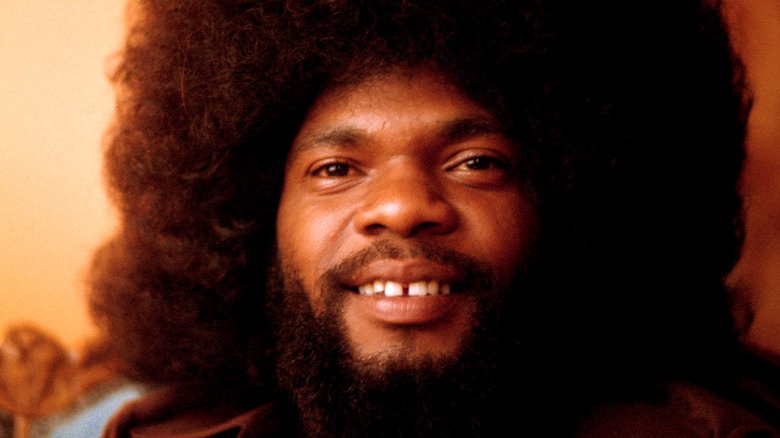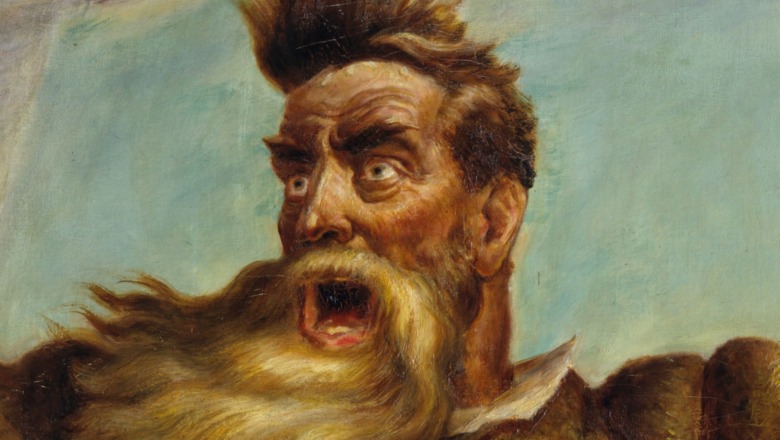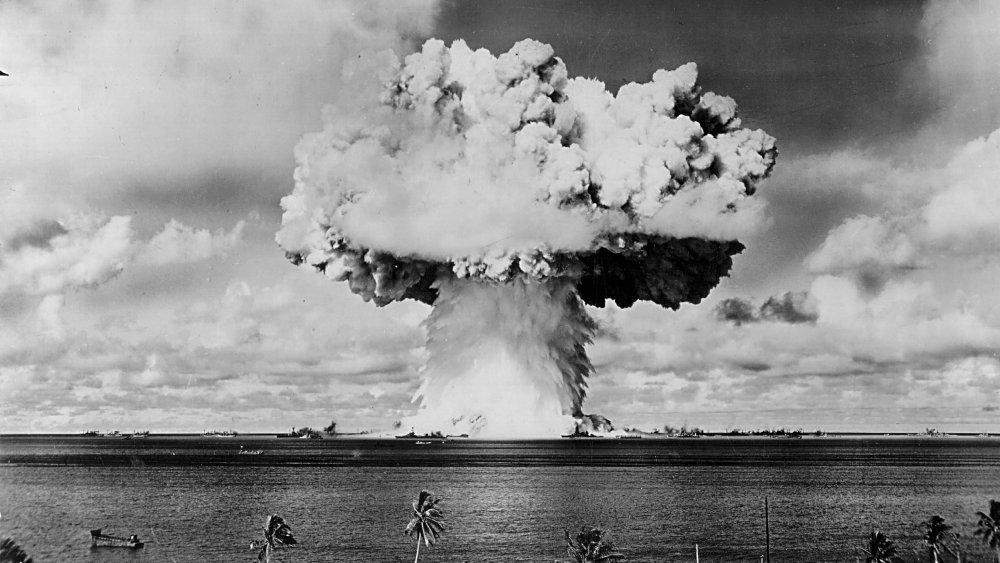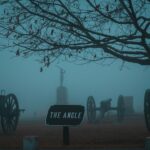
Creepy Tales Of American Civil War Ghosts
The amount of blood shed during the American Civil War is so astronomical that it’s almost unthinkable. According to the American Battlefield Trust, more than 10,500 military engagements were waged between April 1861 and May 1865. (While the war officially ended in April, the last battle didn’t happen until May.) That’s an average of around seven battles, skirmishes, and conflicts per day, and that? That’s insane.
And the death toll was high. It’s estimated that 620,000 soldiers died in those four years, and not all were killed in battle. There was also disease and starvation in the mix, and here’s the thing — that’s just a rough estimate. Some historians suggest that as many as 850,000 died, and to put that in perspective, World War II took 405,399 American lives.
So it’s no wonder that the Civil War has given rise to a number of ghostly tales. Soldiers — both Union and Confederate — are said to still haunt the battlefields where they fell, and sometimes, there’s more to the story than just fighting for their chosen side.
The photographer who claimed to capture spirits of the dead
For William Mumler, photography was magical: In his photographs, he captured ghosts of dead loved ones standing alongside the living who sat for their portraits. According to The Atlantic, it was a shtick that made him rich. Mumler charged between $5 and $10 for a spirit photograph, and that was a hefty sum of money in the 1860s. For Mumler, his “discovery” that he could take spirit photos came at the perfect time: Countless people were mourning the disappearances and deaths of loved ones during the Civil War.
Mumler’s pre-digital photographic trickery was pretty impressive: Some of the biggest names in photography had no idea how he was doing it. Even James Wallace Black, who took the first aerial photos ever, had his picture taken with a spirit … and, says Smithsonian Magazine, he never figured out how it was done.
Mumler was brought up on fraud charges multiple times, but no one was ever able to catch him in the act of fakery. Fueled by the hopes and grief of Civil War survivors, Mumler became famous — so famous that he took the last known photo of Mary Todd Lincoln (via History). In spite of the fact that he had been accused of all kinds of fraud, she wholeheartedly believed that the photo (pictured, right) — which showed the ghostly apparition of her husband, then five years gone — was authentic.
The most famous Civil War ghost of all
Abraham Lincoln’s ghost started appearing almost immediately after his assassination, and according to History, it’s entirely possible that, well … maybe there’s something to it. In early 1865, Ward Hill Lamon, a personal friend of Lincoln’s, recounted a dream that the president had told him about. Lincoln dreamed that he had walked to the East Room, through soldiers standing guard and through sobbing crowds of people dressed in mourning clothes. When he asked who was dead, one of the soldiers responded, “The President. He was killed by an assassin.” Did Lincoln dream he was a ghost … before he died and reportedly became one?
According to the White House Historical Association, reports of Lincoln’s ghost started with a butler, cook, and doorman named Jeremiah “Jerry” Smith. It was Smith who first said that the White House was haunted by the ghosts of previous presidents (and that Satan himself lived in the attic), and strangely, it was Smith who shouted the news throughout the White House when President McKinley was shot.
Smith isn’t the only one who has suggested Lincoln’s spirit has lingered: He’s been seen by the wife of Calvin Coolidge and by Queen Wilhelmina of the Netherlands. Her sighting was just one of many recorded during FDR’s tenure: She was awakened by a knock at her door, and when she opened it to see who it was, Lincoln was standing in the hallway. She fainted, and when she came to, he was gone.
The long-forgotten horrors faced by Civil War orphans
In 1866, the Children’s Orphanage opened in Gettysburg. While it was home to only 22 children to begin with, it was just two years before that number rose to around 60, and by the following year, overcrowding was a serious problem. Additions were built, but by 1870, public awareness had moved elsewhere.
And that, says Paranormal Warehouse, is when Rosa J. Carmichael took a position there, and she was, to put it mildly, not a very nice person. Tales of abuse started to get out, and by 1876, she was arrested for cruelty. But, the good old days being what they were, she was found guilty but only had to pay a fine and was then back at her post. Her abuse, it was said, grew worse: Children were subjected to beatings, they were locked in the outhouses on freezing cold nights, they were shackled in the basement, and those chains and shackles? They’re still there.
It’s no wonder, then, that the spirits of the children are still there, too. Visitors to the site — now the National Soldiers’ Orphans’ Homestead – have reported seeing apparitions of dirty, disheveled children and hearing the sound of children giggling when there are none about. Others describe a feeling of extreme sadness that weighs upon the shoulders when going into the basement. Remnants of the emotions of distraught children, or simply empathy?
Of course there are ghosts on Bloody Lane
Prior to September 17, 1862, the little dirt farm lane (pictured) in Maryland was known simply as the Sunken Road, for reasons you can probably imagine. That was before Confederate troops lined the road’s embankment with fence rails and troops and unloaded on passing Union soldiers at what was essentially point-blank range. By the time the fighting was done — just three and a half hours later — 5,500 men were dead or wounded. And also? According to the National Park Service, there was really no point: Neither the Confederate Army nor the Union gained any kind of military or territorial advantage whatsoever. Now, the route is known as Bloody Lane.
According to the US Department of Transportation, the lane is absolutely haunted. No matter how many people are there at any given time, it remains unnaturally quiet. Visitors report that they can still hear gunfire, and the distinctive smell of gunpowder still washes over those who walk the lane. Some have said they’ve seen soldiers in Confederate uniforms, so realistic that they’re thought to be reenactors … until they disappear. But here’s where it gets creepier.
According to one story, a group of schoolchildren from Baltimore were visiting the site. They heard distinct chanting, so clear that they could all sing the song’s refrain. It wasn’t a Christmas song like they’d thought: It was a Gaelic battle cry, shouted by the Union soldiers of the Irish Brigade as they charged.
Separated in death
Fort Monroe (pictured) is in Virginia, and according to the National Park Service, it’s got around 400 years of history. It’s also said to be haunted by Civil War soldiers, particularly the head of the Confederacy. According to the US Army, Fort Monroe remained in Union hands in spite of being surrounded by Confederate-controlled territory. And the fort was still fairly new when it was used to house Jefferson Davis: In 1865, History says he was implicated in inciting conspirators to assassinate President Lincoln. He wasn’t charged, but it was claimed that he “aided and comforted the insurgents,” among other offenses.
Davis was held in Fort Monroe for some time. Every night, he was escorted along the ramparts on evening walks, while his wife stood vigil in a nearby house, watching him to make sure he was all right. And they’re still reported to be keeping their vigil: Visitors have reported seeing Davis’ ghost, strolling along the ramparts, and the window where his wife stood has been known to vibrate, perhaps in response to her spirit.
They aren’t alone in the afterlife, either. Others have seen strange mists and orbs, and recordings have captured the sound of hoofbeats and voices. One former resident claimed she had been summoned to the back door of her home by a knock, only to walk through her dining room to see a figure, clad in 18th-century dress, standing by her fireplace. Then, he simply disappeared.
Where the ghosts go for a chat
New Orelans’ Beauregard-Keyes House is named for its two most famous residents: Confederate General P.G.T. Beauregard (pictured) and writer Frances Parkinson Keyes. It sits on the outskirts of the French Quarter, and even though Beauregard and his second wife lived there for just two years, that was apparently long enough.
According to Ghost City Tours, there’s definitely more than one presence that has decided to call the gorgeous New Orleans home, well, home. The most commonly sighted are Civil War soldiers, easily identifiable by their uniforms. When they appear, they’re usually just standing there, staring at something beyond what our earthly eyes can see. The Lineup says that at least once, one of those soldiers spoke. A man attending a garden party reportedly had an entire conversation with a soldier in uniform, only to learn later that there was absolutely no one matching that description actually at the party.
Author Frances Keyes wrote that she regularly saw the ghost of Beauregard himself. They had, apparently, buried him without properly dressing him in his entire uniform, and his meticulous dress sense doomed him to wander his old home, forever looking for his boots.
The shoeless ghost of Devil's Den
The American Battlefield Trust says that Gettyburg hosted the bloodiest battle of the Civil War, with more than 51,000 casualties by the time the fighting was over. It’s not surprising that some reportedly stayed … particularly at the eerily named Devil’s Den.
Devil’s Den (pictured) is a rock formation in the middle of the Gettysburg battlefield, and according to Civil War Ghosts, it was here that the fighting reached its peak. And it’s here that multiple visitors have reported being approached by a soldier dressed in the uniform of a Confederate soldier from Texas, minus shoes. He often suggests where they need to go next, and his image has been captured in photographs as far back as the 1970s. Several people have said they’ve gotten lost, and he’s appeared to point the way to the road … before simply vanishing.
There are a few other ghosts, too. In 1939, a man reported asking some disheveled-looking men dressed as soldiers if they needed help. They said yes and guided the unwary traveler back to a tree, where another man appeared to be dying of a massive chest wound. When the frightened man told the cashier at a nearby gas station what had happened, he was told that he wasn’t the first person to encounter the soldiers. At least one woman claimed to have been grabbed by a figure in a Civil War-era uniform, and some see the Ghost Rider — a specter who vanishes into thin air as quickly as he appears.
The children of Harpers Ferry
When schools teach their students about Harpers Ferry, they almost never teach kids about the children who are still there, walking the streets of the hotly contested Civil War town.
According to West Virginia Public Broadcasting, Harpers Ferry was the site of some terrible fighting. Rick Garland, head of Ghost Tours of Harpers Ferry, tells the tale of a family who’d been living in one of the town’s apartments during the 1980s. Every night, they could hear the sounds of a crying baby. Getting more and more annoyed, the father finally snapped at the baby, “I told you, you have to shut up!” With a flash of light, there was silence. Later, the crying started again, and the dad yelled. This time, a loud crash preceded the end of the crying. Afterward, the family discovered the diary of a girl who lived in that very same building, which detailed the night a cannonball smashed through and struck a young mother trying to rock her infant to sleep, killing the baby and badly injuring her.
And here’s one more tale (via The Washington Post): Sometimes, people hear the crying of a young boy near the Town House. It’s said he was a Confederate drummer boy, kept by Union soldiers and made to do chores like washing their clothes. Then, one night, when a group of drunken men got a little too pushy, and he fell out the window. He still cries in the street below, where he died.
The California soldiers who still take their jobs very, very seriously
The Civil War spanned the entire country and reached all the way to California and Camp Drum. According to Curbed Los Angeles, the outpost was used for training Union soldiers, and as a city exterminator working there in the late 1980s found, some of those soldiers are still there.
Fred Duran was setting mouse traps when a man asked if he’d seen Maria. He looked up to see a man in a Civil War outfit, but Duran still answered him in the negative and didn’t think anything more of it … until he commented to the caretaker that “the guy that lives here takes his job seriously.” No guy, they said — that was the Captain’s ghost.
That “Captain” was Lieutenant Colonel James F. Curtis, who took over in 1863. He moved there with his wife, Maria, and even though they moved on in life, it seems they’ve returned in death. Maria is simply called “The Lady of the House,” and those who’ve met her report the ghostly figure of a young woman in a long dress. They say that she was the happiest she’d ever been when she lived there and simply chose to spend eternity there. The ghosts are said to hum, turn lights on and off, and fill the place with the smell of pipe tobacco. And once, Colonel Curtis asked that the chair be moved closer to the fireplace: It was cold.
Gettysburg's civilian casualty
War always comes with, well, let’s call it “collateral damage.” Famously, there was one civilian casualty killed during the fighting at Gettysburg, and that’s Jennie Wade. The house where she was killed still stands, and according to Civil War Ghosts, she’s still there.
During the battle, Jennie, her mother, and her sister helped care for Union soldiers, taking them food and water throughout the battle. She was baking bread when a bullet — just one of around 150 that hit the house — passed through two doors and hit her in the back. She was killed instantly. There’s more to the sad story, too: Jennie’s fiancé, Jack, was critically injured two weeks before she was shot and ultimately died a few days after she did. Neither ever knew what happened to the other.
Visitors to the Jennie Wade House, which is now a museum, report that she’s still there. She’s occasionally been seen walking through the house, and sometimes, she’s even been glimpsed walking in the nearby countryside, perhaps lamenting the blissful life and old age that both she and her beloved were denied.
The haunted hospital of Gettysburg
Today, it’s known as the Farnsworth House Inn, but during the Battle of Gettysburg, it was occupied first by Confederate forces and used as a hospital and impromptu headquarters. It’s still riddled with bullet holes, and it eventually fell to Union forces, who stormed the building and killed the Confederate snipers who had been stationed there.
Some of those soldiers are still there, and according to the Shultz family (who bought the property in 1972), some of them seem to be caught in something of an infinite, eternal loop, still patrolling the same routes they did in life. As told by Civil War Ghosts, one, thought to be a sharpshooter stationed in an attic window, can be heard playing the mouth harp, particularly at night.
Footsteps are common, along with the sounds of heavy breathing and cigar smoke. A few women remain there, too, including one who tucks guests into their beds at night (thought to be a midwife) and a cook who’s reportedly such a solid figure that she’s often mistaken for staff … who, they say, are occasionally shoved and pushed by this vaguely malevolent entity.
Are they returning in search of their amputated limbs?
Medicine — and particularly surgery — during the Civil War era was the stuff of nightmares, so it’s no wonder that the trauma of having a limb or two amputated would be enough to tie a person’s soul to a place. In this case, the place we’re talking about is the Marshall House Hotel in Savannah, Georgia. During the war, the house served as a Union hospital and, according to Savannah.com, at least one patient remains: He’s a Union soldier with one arm, who wanders the hallways of the hotel. He’s been heard to ask, “Has anyone seen my arm?”
As if that’s not terrifying enough, workers renovating the hotel in the 1990s did, in fact, find what might have been his arm. They were replacing floorboards when they found what they thought at first to be recent human remains but which were eventually identified as the amputated limbs of the Civil War soldiers who were treated there.
According to Ghost City Tours, there are more otherworldly inhabitants there, too, including a score of children (who have been known to bite people, because some kids are just the absolute worst), a cat, and — perhaps — the spirit of “Uncle Remus” author Joel Chandler Harris, who can sometimes be heard typing away on his typewriter.

The Truth About Weird Al Yankovic And Coolio's Feud

Here's What Would Happen If We Nuked The Moon
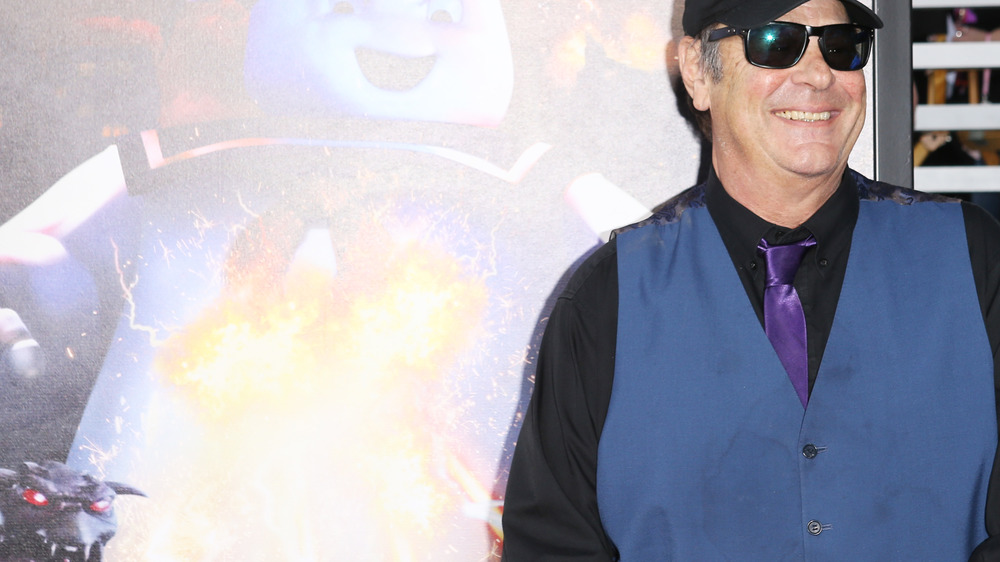
What You Didn't Know About Dan Aykroyd's Paranormal Obsessions
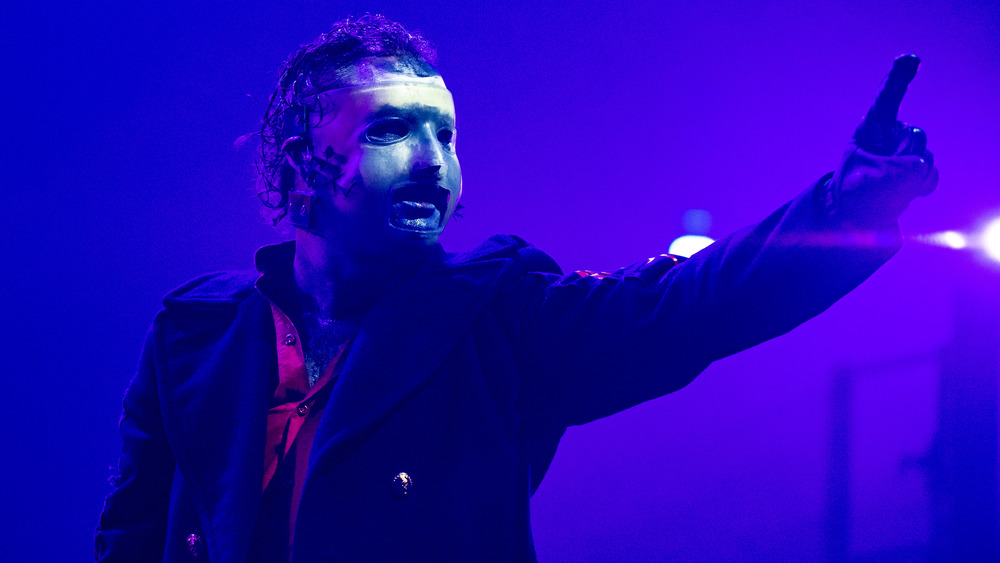
Why Slipknot Believes They Were Haunted While Recording Vol 3
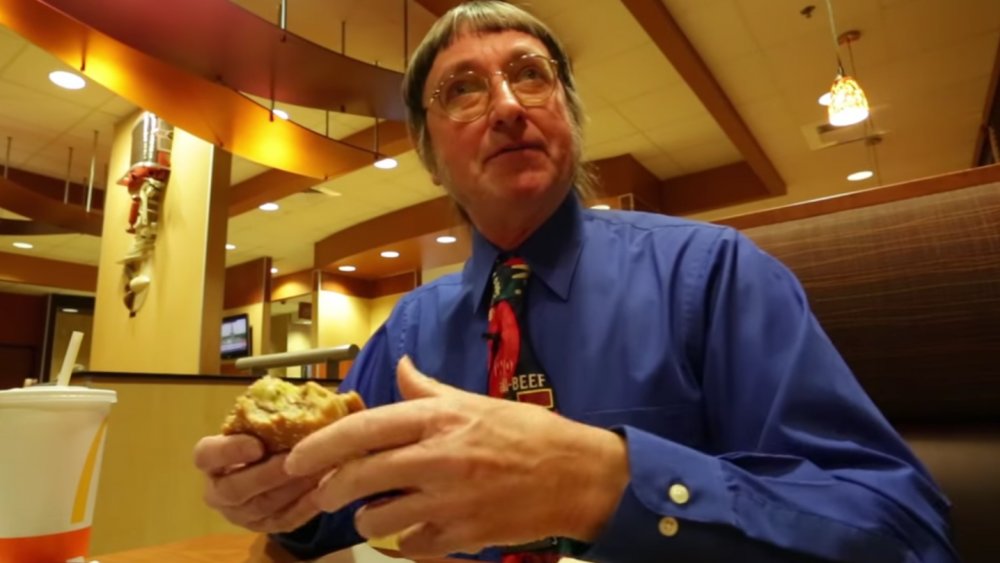
The Truth About The Man Who Ate 30,000 Big Macs

The Bizarre Truth Of Madagascar's Ancient 'Crazy Beast'
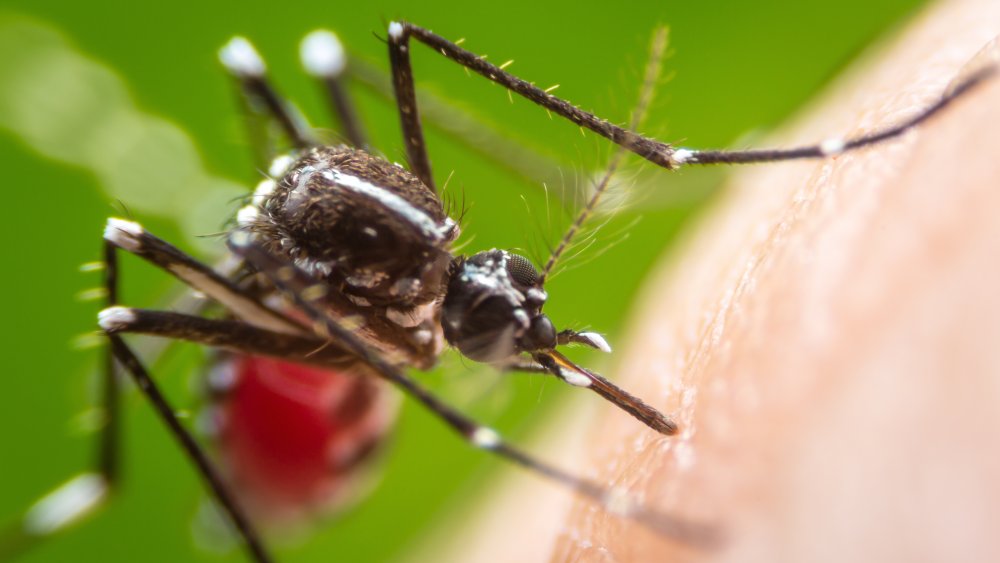
The Surprising Trick To Keeping Mosquitos Out Of Your Yard

The Truth About How Vlad The Impaler Died
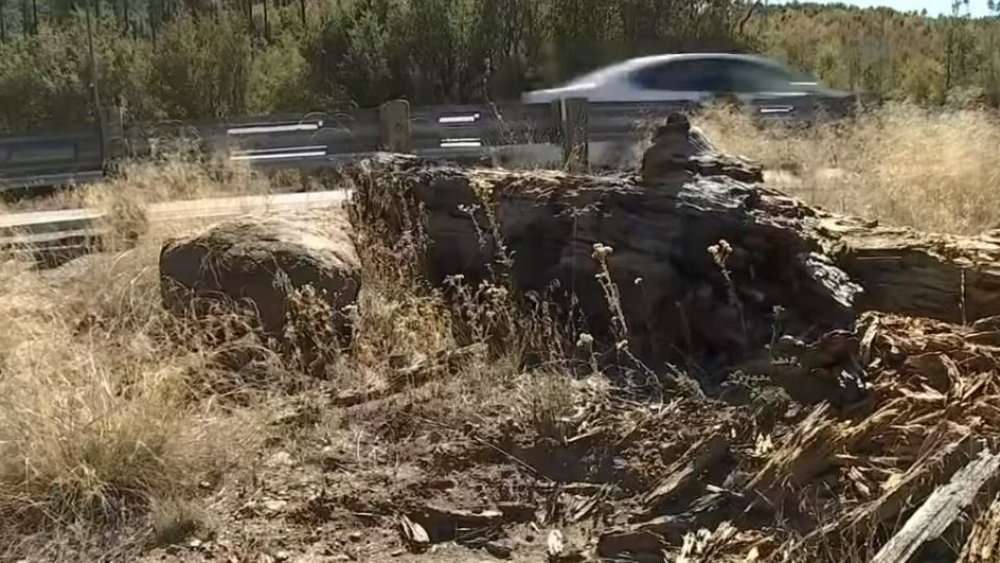
Wizard Rock, A Famed 1-Ton Boulder, Has Disappeared In Plain Sight

Does A Person's Hair And Fingernails Really Keep Growing After Death?
